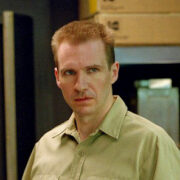You taste his movies through your eyes. It does not matter if it is a tale of urban alienation, forlorn love, or modern living—to mete out any other treatment to Wong Kar-wai’s brand of luxuriant cinema is undoubtedly an insult.
As the luscious shades of red, green, and blue commence their bizarre tribal dance, you cautiously lick the cream off the top and then dig into this sumptuous feast. Be it the fluorescent string of clover-green windows in an elevated train sliding through the midnight darkness of a lonely city or the stunning lady in black wearing oversized sunglasses and leaning against her convertible—every bite is a guilty pleasure. There is no looking back now. Soon, you’re overwhelmed by the opulence of this singular cinematic experience and the visual stimuli merely become a portal to other promised pleasures. You sit back and relent. You stop questioning and let the waves wash over you.

You taste his movies through your eyes.
Wong Kar-wai offers you “luscious, colourful treats that are gorgeous to behold and easy to swallow,” says Roger Ebert. To me, he seems like a “filmmaking poet” who paints his words on the canvas of a 70mm film with such dexterity that a little play of light brings to life sensual textures, flawless exteriors, and moments frozen in time.
Often described as an auteur because of his highly stylized and visually distinctive films, Wong Kar-wai belongs to the Second New Wave of Hong Kong filmmakers who sought to provide an artistic impetus to the social, political, and cultural issues facing Hong Kong during the mid 1980s. With the signing of the 1984 Sino-British Joint Declaration outlining the handover of Hong Kong to China, citizens and filmmakers alike were forced to confront and scrutinise the dual nature of their cultural identity—caught in the proverbial conflict between Western and Eastern sensibilities. Consequently, the cinema of Hong Kong from this period dwells on themes that explore its “cultural, spiritual, and geographical dislocation”. Specifically, Wong’s movies are marked by their obsession with disaffection and isolation, often focusing on characters that are strikingly poetic in their solitude even when swimming in a sea of faces. They are “idiosyncratic and romantic tales of the young and disenfranchised uniquely representative of the cultural influences which distinguish his native land”.
John Donne said, “No man is an island”. But in the world created by Wong, everyone is a self-contained universe. Not surprisingly, Wong’s protagonists often happen to be the lost souls of our generation—random, unremarkable individuals embedded in the chaotic fabric of modern cities. Their paths might intersect briefly but as soon as they have shared their private moment, they are on their way again. Battling their insecurities, their passions, and at the same time conscious of the larger world in which they find themselves entrenched, these characters imbibe the themes Wong is best known for—loneliness, unrequited love, and a subtle cultural clash. In short, they are manifestations of the city itself. In a concrete jungle where space is scarce, the light is artificial, and everybody else seems to be little more than a shadow on the curtain of your eyes, existence is sometimes captured not by faces or names but by means of subtle hints—a telephonic conversation or a searching gaze at the window across the street—in order to create the illusion of distance, alienation, and, in my opinion, insignificance; like the adulterous spouses of In the Mood for Love (2000) and the phantom lovers in Chungking Express (1994), we never get to meet these other people. They have played their small part in this universe and spun into a different orbit.
In no other of Wong’s movies do these various elements come together as effortlessly as In the Mood for Love. Set in the Hong Kong of 1962 during a period of unrest when the threat of communism had seemed genuine, the film is the perfect portrait of Wong’s visual aesthetics. Dazzling dresses, sleazy motel rooms with red lighting, and the lethargic curls rising from a filter-less cigarette—they have never looked more appealing on screen. The Hong Kong recreated here is both nostalgic and contemporary, in perfect synchrony with its dual identity, exhibiting essential ingredients of a Western upbringing and an ancient Chinese heritage. The title card at the beginning of the movie—“It is a restless moment”—prepares us for this mood of uncertainty that is mirrored by the lead characters who, while aware of the infidelity of their spouses, find themselves unable to confess their feelings for each other. In the cramped confines of single room houses and congested offices, love “grows not in leaps and bounds but tiny increments, through the smallest of gestures, and the pauses between gestures”. In the words of a Chinese proverb, it begins with emotion and ends with restraint.

In the world created by Wong Kar-wai, everyone is a self-contained universe.
Music is a strategic—and frequently essential—component of Wong’s films, its cosmopolitan nature reaffirming the cultural dichotomy of his homeland. He utilises its effectiveness in saying and repeating that which can not be articulated through dialogue or conversation. For instance, the score is used to create a particular ambience (a passionate and destructive love affair gyrates in rhythm to the notes of a tango) in Happy Together, a specific mood (time slows down to a crawl as Nat King Cole croons in the background) in In the Mood for Love, and extrapolate a character (a 1960s track, ‘California Dreamin’’, plays incessantly during the second half of the movie and conveys not only Faye’s state of mind but also her aspirations) in Chungking Express.
Wong’s movies have often been criticised for lacking a well-defined plot. Of course they don’t! His are movies about people who are in limbo, waiting for the real story of their lives to begin. Devoid of the traditional narrative construct, the presence of these characters in the film can be justified only if form gains precedence over content. If the surface aspects of a movie, such as the plot and the star cast, are all you want, you are most likely to end up frustrated. That is a given!
Wong, for me, personifies what I call “slice of life” movies. These are films about people whose lives do not have a pretty plot that can be divided into three acts; films about people recuperating from the hidden dangers of love. Like Cop #233 in Chungking Express, who fixatedly eats canned pineapple with an expiry date of May 1 because he feels that everything comes with an expiry date, including love. Or Su, who sneaks into Chow’s hotel room and fetishes over his belongings, managing to steal a solitary drag from one of his cigarettes. These characters may be improbable or even impossible and their metaphorical musings may seem hopelessly romantic. But they exist in our imagination and as someone said, “the most potent way to exist is to occupy someone else’s imagination”. That is how we converse with these people. That is how we relate to them. And that is how they help us rehabilitate from our addiction to love. So, how about we just start over?
Note: A majority of the critical component of this post has been culled from this excellent thesis on Wong Kar-wai’s work.








